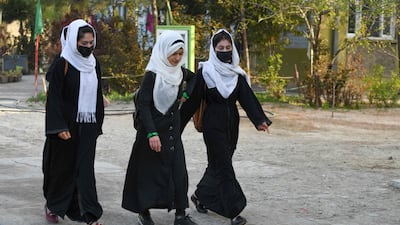“What good is the kingship of the world?” the legendary Pashto-language poet Ghani Khan once wrote. “Why multiply your worries?”
The Taliban did not pay heed to his advice. The past 14 months have not been the best display of governance by the group. But it would be unfair to attribute the failures solely to them. William Bryd, a senior expert at the US Institute of Peace, brilliantly summarised the Taliban’s successes and failures in a recent piece for the popular national security blog Lawfare, in which he argues that the international community must understand the Taliban’s governance strategy if it wants to use what few tools it has left to engage with them.
The issues the Taliban face today can be broken down into inherited issues, inherent issues and self-created ones. As far as inherited issues go, there is the corruption endemic in Afghanistan’s state entities, the country’s over-reliance on an aid-driven economy and the looming humanitarian crisis that has its roots in the republic that preceded Taliban rule.
The inherent issues can be seen in the Taliban’s lack of experience in governance, and the difficulty they face in transforming from a flat and fluid insurgency to a tall and more formal government apparatus.
The issues the Taliban themselves have created include the group’s penchant for moral policing, human rights violations, crackdowns on free media and banning girls' education, among other things. Though most of the self-created issues are not unique to the Taliban – they are, in one form or another prevalent in other countries with whom the international community continues to engage – the issue of the girls' education ban is unprecedented in the modern world.
When it comes to the ban, we have heard a vast array of excuses from the Taliban leadership over the past 14 months, ranging from the cultural, logistical, financial and, ultimately, religious. It appears that those in the group who were willing to use the issue as political leverage to gain concessions from the international community took too long and let those who fundamentally oppose such education to consolidate their excuses.
In a situation where those closest to the Taliban’s supreme leader, or Emir, state that only he has the religious authority to ban a permissible act if, in his judgement, the harms outweigh the benefits, it is difficult to imagine how any internal or external pressure could overrule that decision. Yet, we see prominent members of the Taliban movement vocally opposing the ban. This raises the question of what it is these inner dissenters see that those of us on the outside cannot.
Those within the Taliban leadership advocating for the repeal of the ban do so for a few reasons. They believe that any pressure, whether it is internal in the form of demonstrations or external through the threat of sanctions, will only further harden the stance of the Emir. Demonstrations on Afghan streets in the face of a trigger-happy Taliban police force will always present a great risk of violence – not to mention an attractive target for the ISKP terrorist group. Conversely, when any repeal on the ban is perceived as having been imposed on the group from abroad, there is a need to appease nativist fighters by resisting such foreign pressure.
There is, however, another opening for advocates of girls’ education within the Taliban. The issue is occasionally presented by some within the movement not as religiously forbidden but one that the Emir believes to be forbidden only under the current circumstances. In other words, Afghan schools are not ready to be open to girls yet. They hope to challenge the hardliners’ cost-benefit analysis by showing that the cost of the ban – the erasure of women from public life – is greater than the benefits they see for the moral fabric of society. There are internal conversations within the Taliban happening right now, with advocates pushing this argument and also making public remarks to generate stronger discourse in favour of the opening of schools.
So where does that leave the international community? Countries that would like to see Afghan girls educated will have to consider changing their approach from applying external pressure to a more nuanced one that involves collectively brainstorming with and supporting those within the Taliban movement who are advocating for the opening of girls’ schools. It is, of course, likely that such a group’s motivations are not completely altruistic, but it is important to exploit their desire for their nascent government to have better foreign relations.
And what about those within the Taliban, beyond the Emir himself, who oppose girls education altogether? Is it worth engaging with them? That might have worked had those individuals publicly and honestly stated their opposition. But they have not, choosing silence or obfuscation instead. Hence the only opening that remains is that of working with the advocates.
By collectively designing messaging campaigns with the advocates and providing platforms to the pro-education leaders as well as religious scholars at Afghanistan’s existing educational institutions, the international community can help create a national discourse that will ultimately help the Taliban resolve their internal tension over the issue. Media campaigns that amplify voices from within the local community are always going to have a greater impact than campaigns that might be billed as western propaganda.
Afghanistan’s grand impasse over girls' education can only be broken by considering those within the Taliban who are risking their reputation by vocally advocating against the ban to be partners, and supporting them in winning the internal battle. Just as the ban came from within the Taliban, the repeal is likely to come from within the movement as well.












